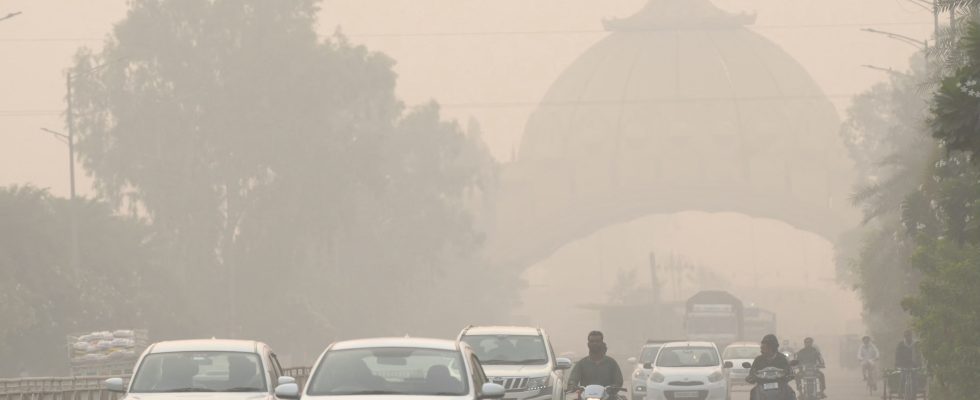The Indian capital New Delhi is once again hit by an episode of very heavy pollution, materialized by a yellowish and toxic fog. As a result, all schools were closed from this Friday, November 3.
According to the Swiss Air Quality Monitoring Society, IQAir, the level of PM 2.5 particles, the most dangerous, is more than 18 times higher than the maximum level set by the World Health Organization (WHO). The toxic fog, fueled by agricultural burning, industrial emissions and road transport, is stagnating in the megacity of 30 million inhabitants.
Delhi Chief Minister Arvind Kejriwal announced late Thursday evening that all primary schools would be closed in the capital for at least two days. “In light of rising pollution levels, all government and private primary schools in Delhi will remain closed for the next two days,” announced the minister on X (formerly Twitter).
Agricultural burning
Delhi, one of the largest urban areas on the planet, is consistently ranked among the most polluted cities in the world. A real “Airpocalypse”, according to the authorities. “Pollution is an emergency,” said Gopal Rai, environment minister of Delhi – a territory including the capital and its rapidly expanding region.
Winter in Delhi, the level of PM 2.5 – carcinogenic microparticles that penetrate the lungs and blood – is often well above the maximum level set by the World Health Organization (WHO). Why was the capital particularly affected every winter? The problem peaks around the Hindu festival of Diwali, which coincides with the weeks when tens of thousands of farmers in northern India burn rice stubble. The practice is one of the main causes of the pollution that chokes Delhi every year and persists despite efforts by authorities to persuade farmers to use other land clearing methods and threats of punitive measures. Delhi authorities have launched biochemical sprays to speed up the decomposition of stubble. But like many environmental efforts, good intentions run into political obstacles.
A “green war room”
The authorities regularly announce different plans to reduce pollution, in particular by suspending construction work, but without much result. To address the decades-old problem, a high-tech coordination center was opened in October in the Indian capital. There, 17 experts monitor, on giant screens, the evolution of pollution in real time using NASA satellite images and updates of the air quality index measured by sensors. Called the “Green War Room,” the center is a coordination platform linked to 28 government agencies. “The Green War Room, if used correctly, will be effective in eliminating pollution for a certain time,” told AFP Sunil Dahiya, analyst at the Center for Research on Energy and Clean Air. “But this is not the solution to reducing emissions,” he emphasizes, “when it comes to breathing clean air, pollution levels must be reduced, otherwise drastic and systematic changes are necessary. “
A study of The Lancet, a British medical journal, published in 2020, attributed 1.67 million deaths, a year earlier, to air pollution in India, including nearly 17,500 in the capital. Pollution reduces the life expectancy of a Delhi resident by 11.9 years on average and by five years for Indians in general, according to a report released in August by the Energy Policy Institute at the University of Chicago. Air pollution is “one of the greatest environmental risks to health”, warns the WHO. It causes strokes, heart and respiratory diseases as well as lung cancer.
The WHO emphasizes that “many factors of air pollution are also sources of greenhouse gas emissions” and that policies aimed at reducing air pollution “offer a win-win strategy for both the climate and the health”. India remains heavily dependent on coal for its energy production. The country has seen its per capita emissions increase by 29% over the past seven years and is reluctant to implement policies to phase out polluting fossil fuels.
